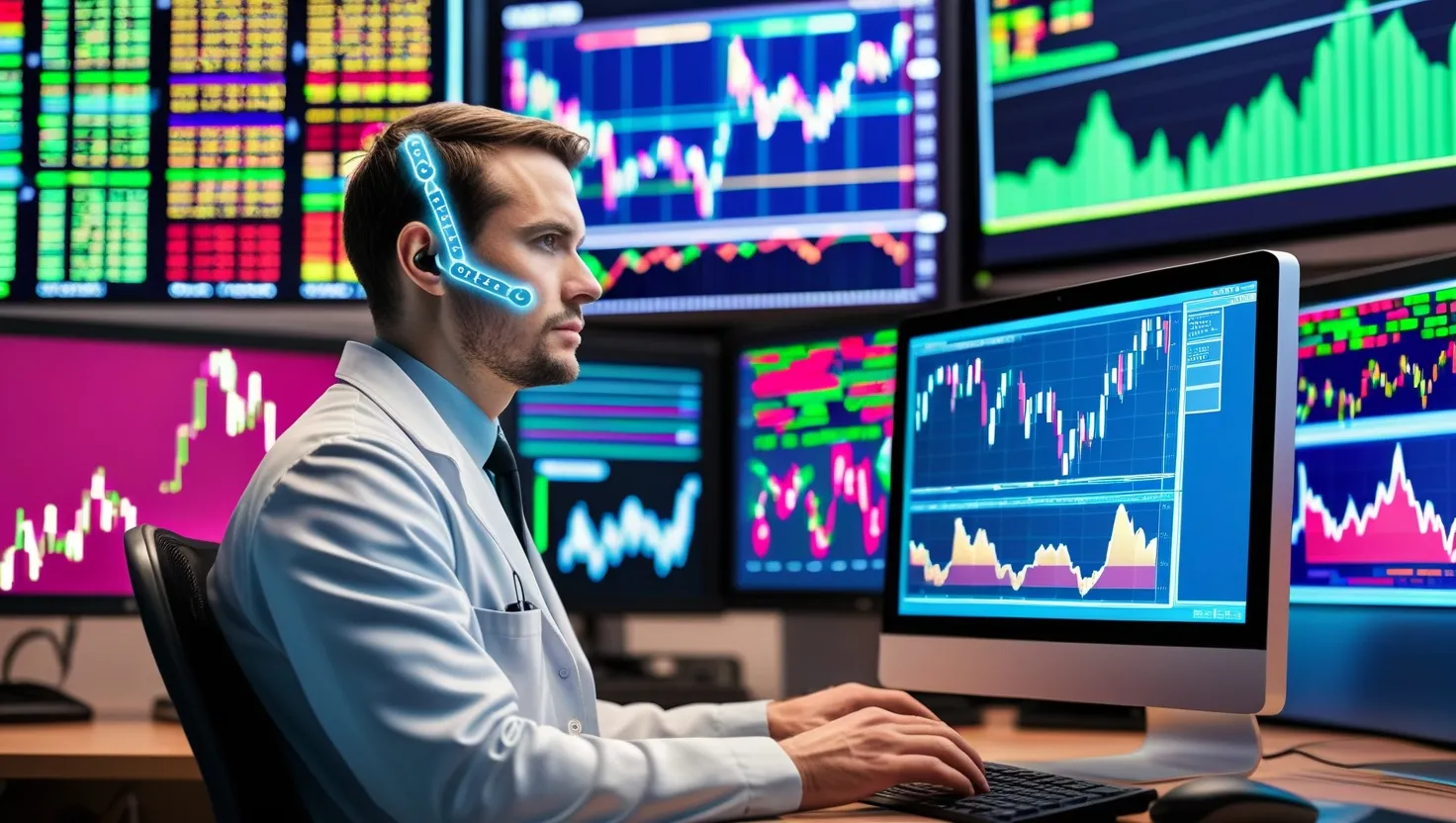In the fast-paced world of finance, making informed trading decisions can be a daunting task. While traditional methods rely heavily on data analysis and market trends, there’s a growing interest in a more personal and intuitive approach: using biofeedback to guide your investment choices.
Imagine sitting in front of your computer, scrolling through market data, and simultaneously monitoring your heart rate variability, skin conductance, and even brain waves. This isn’t about relying on gut feelings or market intuition; it’s about tapping into your physiological responses to uncover subtle cues that your conscious mind might miss.
How Biofeedback Works
Biofeedback is a technique that allows you to monitor and control your body’s physiological responses in real-time. By using advanced biofeedback devices, you can track how your body reacts to different pieces of information. For instance, a slight increase in heart rate when reviewing a particular stock could indicate hidden potential that you hadn’t considered before. Conversely, a drop in skin conductance might suggest stability or a lack of risk, even if the data seems uncertain.
This process is essentially a form of self-awareness training. By learning to recognize and interpret these bodily signals, you can develop a unique edge in the market. It’s not just about crunching numbers; it’s about listening to the whispers of your own biology.
Physiological Signals as Market Indicators
Let’s break down some of the key physiological signals that can be used in biofeedback investing.
Heart Rate Variability (HRV)
HRV measures the variation in time between each heartbeat. High HRV is often associated with good physical and mental health, as well as better stress management. In the context of trading, an increase in HRV could indicate that you’re in a calm and focused state, ready to make rational decisions. On the other hand, a decrease in HRV might signal stress or anxiety, suggesting that you should take a step back and reassess your strategy.
For example, if you notice your HRV increasing when you’re analyzing a particular stock, it could be a sign that your subconscious is picking up on positive cues that your conscious mind hasn’t fully processed yet.
Skin Conductance
Skin conductance measures the electrical conductivity of your skin, which can indicate your level of arousal or stress. When you’re excited or stressed, your skin conductance tends to increase. In trading, a sudden spike in skin conductance while reviewing market data could indicate that you’re reacting emotionally to the information, rather than making a rational decision.
Brain Waves
Brain waves, particularly alpha and theta waves, are associated with states of relaxation and focus. Using EEG biofeedback, you can monitor your brain wave activity in real-time. If you notice an increase in alpha waves while analyzing market trends, it might suggest that you’re in a state of deep relaxation and focus, which can be ideal for making clear-headed decisions.
Practical Applications
So, how can you integrate biofeedback into your trading routine? Here are a few practical steps:
Setting Up Your Biofeedback System
You’ll need a biofeedback device that can measure your physiological responses. These devices can range from simple heart rate monitors to more advanced EEG systems. Some apps and software also offer biofeedback training programs that you can use in conjunction with your trading platform.
Training and Calibration
Before you start using biofeedback for trading, it’s important to calibrate your system and understand what your baseline physiological responses look like. This involves monitoring your heart rate, skin conductance, and brain waves under different conditions to see how they vary.
Real-Time Monitoring
As you analyze market data, keep an eye on your physiological responses. If you notice any significant changes, take a moment to reflect on what they might mean. For instance, if your heart rate increases when you’re looking at a particular stock, ask yourself why that might be. Is it because you’re excited about the potential, or are you feeling anxious about the risk?
Combining Biofeedback with Traditional Analysis
Biofeedback shouldn’t replace traditional data analysis but rather complement it. Use your physiological signals as an additional layer of insight to validate or question your decisions. For example, if your data analysis suggests a stock is a good buy, but your biofeedback signals indicate you’re feeling stressed or uncertain, it might be wise to take a step back and reassess.
Success Stories and Case Studies
While biofeedback investing is still a relatively new field, there are already some compelling success stories. For instance, traders who have incorporated biofeedback into their routine often report making more informed and less impulsive decisions. They can better manage their stress levels and stay focused during volatile market conditions.
One trader shared an experience where he noticed his skin conductance increasing significantly when he was about to make a trade based on emotional rather than rational grounds. Recognizing this signal, he took a break and came back to the decision later with a clearer head, avoiding a potentially costly mistake.
Ethical and Practical Considerations
As with any new technology or technique, there are ethical and practical considerations to keep in mind. Not all biofeedback devices are created equal, and some may not be backed by scientific research. It’s crucial to invest in devices and software that have been clinically tested and validated.
Additionally, biofeedback should be used as part of a comprehensive trading strategy, not as a standalone method. It’s important to continue educating yourself on market trends, economic indicators, and other traditional analysis tools.
The Future of Biofeedback Investing
The biofeedback market is growing rapidly, driven by advancements in technology and increasing awareness of mental health and stress management. As more traders begin to use biofeedback, we can expect to see more sophisticated devices and software tailored specifically for trading.
In the future, we might see biofeedback integrated into trading platforms themselves, providing real-time physiological feedback alongside market data. This could revolutionize the way traders make decisions, making the process more intuitive and less prone to emotional bias.
Conclusion
Biofeedback investing is not just a novel idea; it’s a practical approach to enhancing your trading strategy. By listening to your body’s subtle cues, you can gain a unique edge in the market. It’s about combining the power of data analysis with the wisdom of your own physiology to make more informed, less impulsive decisions.
As you embark on this journey, remember that biofeedback is a tool, not a magic solution. It requires training, calibration, and integration into your existing trading routine. But for those willing to explore this new frontier, the potential rewards are significant.
In a world where trading decisions can be made with both data and instinct, biofeedback offers a promising path forward. So, the next time you’re analyzing market trends, take a moment to listen to your body. You might just uncover the insights you need to make your next big move.






